Although it is regrettable to be a victim of negligence, the legal system provides necessary recourse. Negligence law allows victims to be compensated for the harm they have suffered.
However, the law distinctly differentiates between negligence and gross negligence, each with its own requirements and consequences. Understanding these distinctions is crucial for navigating the complexities of liability and compensation in negligence cases.
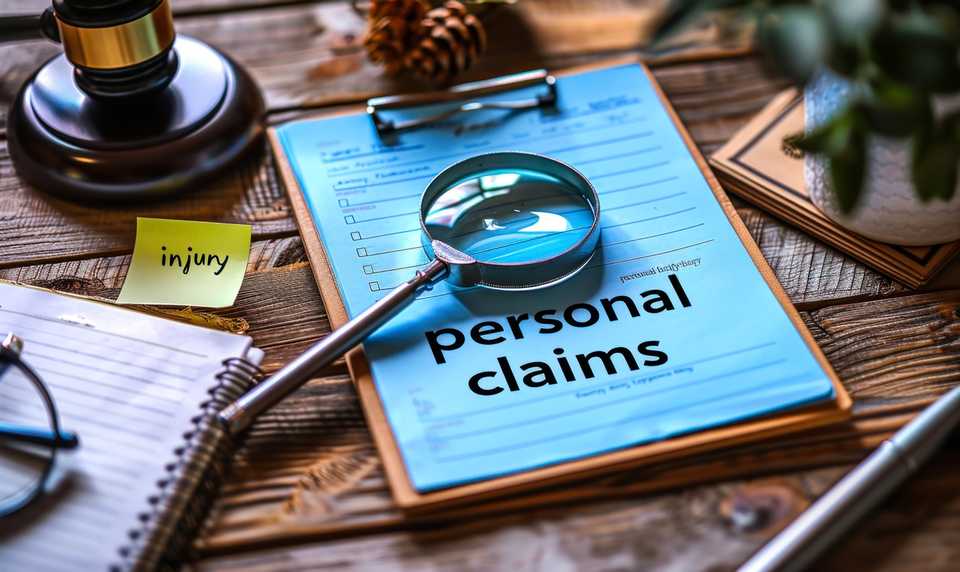
| In this article, JuriGo delves into the differences in the law between negligence and gross negligence in Ontario! |
|---|
What is Negligence in Ontario Law?
Negligence in Ontario is a crucial aspect of tort law, dealing with scenarios where individuals suffer unintentional harm as a result of someone else's careless actions or omissions.
This area of law is governed by the Negligence Act, which sets the framework for determining liability and ensuring that those who have been wronged receive appropriate compensation.
The primary goal of negligence law in Ontario is to establish who is at fault when harm occurs and to hold them accountable for their actions. By thoroughly evaluating the circumstances surrounding each case, the law seeks to ascertain whether the actions in question breached a standard of care expected in a given situation.
Negligence law not only addresses the immediate need for compensation but also promotes a culture of responsibility and caution among individuals and organizations. By holding people accountable for their negligent actions, the law helps to deter future instances of carelessness that could lead to harm!
What are the essential elements that must be proven in a negligence action?
Unfortunately, if someone has been harmed due to another party's negligence, they are responsible for taking legal action and establishing the negligence they experienced in order to seek compensation. To succeed in a negligence claim, the plaintiff must provide evidence meeting four crucial criteria:
- Duty of care
- Breach of duty
- Damages
- Causation
Duty of care
The first element in a negligence action is establishing that the defendant owed the plaintiff a duty of care. Duty of care is a legal obligation that requires individuals and organizations to adhere to a standard of reasonable care to prevent harm to others.
This duty arises from the relationship or circumstances between the parties, necessitating that individuals act rationally and prudently to avoid foreseeable risks of harm. Essentially, the concept of duty of care ensures that individuals take reasonable steps to prevent potential dangers that their actions or omissions could cause.
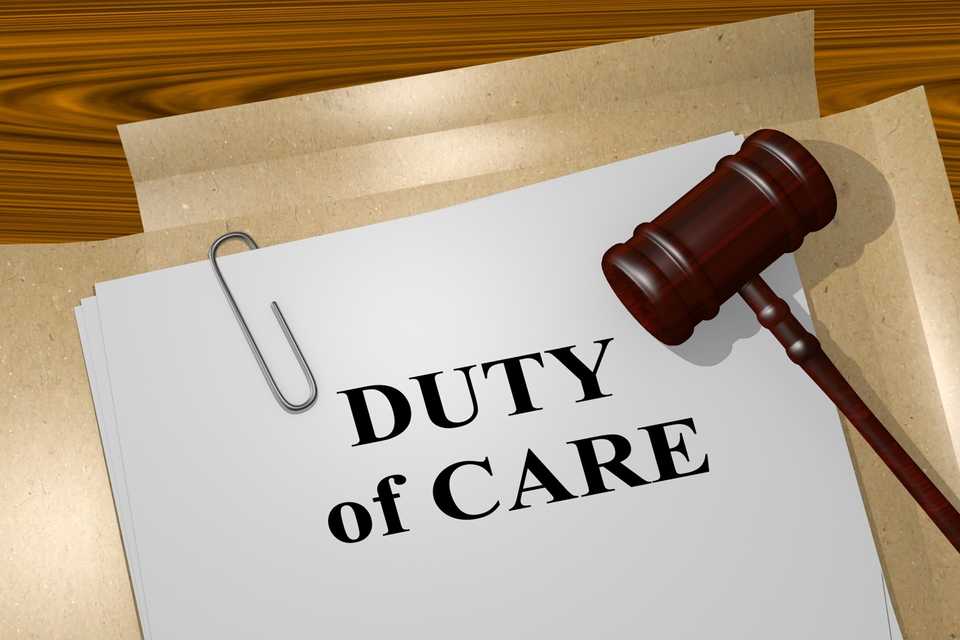
| Example: Consider a situation where a store owner has a responsibility to keep their premises safe for customers. If the owner fails to clean up a spilled liquid on the floor, creating a slip hazard, they are neglecting their duty of care. In this case, if a customer slips and is injured due to the owner's failure to address the hazard, the store owner can be held liable for the negligence because they did not take reasonable steps to prevent foreseeable harm. |
|---|
Breach of duty
The second element of a negligence claim is determining whether the defendant breached the standard of care. A breach of duty occurs when an individual's conduct falls short of the level of care that is deemed reasonable under the circumstances, thereby creating an unreasonable risk of harm.
Essentially, a breach of duty arises when a person fails to meet the legal obligation to act in a manner that a reasonable person would in a similar situation. To assess whether a breach of duty has occurred, the "reasonable person" standard is used.
This standard is based on the actions of a hypothetical reasonable person who is expected to act with a level of prudence and caution that would be deemed appropriate under the same conditions. If the defendant’s conduct is found to be below this standard, it is considered a breach, and they may be held liable for any harm that results.
Damages
The third element of a negligence claim is proving that the plaintiff sustained damages as a direct result of the defendant’s breach of duty. In legal terms, damages refer to the compensation sought for the losses and suffering experienced by the plaintiff due to the defendant’s negligent actions.
These damages can encompass a wide range of losses, including but not limited to medical expenses, lost wages, property damage, and pain and suffering. To establish damages, the plaintiff must demonstrate that they have incurred a tangible loss or harm directly linked to the defendant’s breach of duty.
This means the plaintiff must provide evidence showing how the defendant’s actions led to specific, quantifiable losses. The proof of damages is essential for obtaining monetary compensation, as it verifies the extent of harm suffered and justifies the financial compensation sought.
| **Exemple :**Let's take the example previously discussed, where the store owner fails to clean up a spilled liquid on the floor, creating a slip hazard.In this scenario, if a customer slips and is injured due to the store owner’s failure to address the hazard, the store owner may be held liable for negligence. The damages in this case could include:Medical expenses: Costs incurred for treating the customer’s injuries, such as hospital bills, medications, and any necessary follow-up care.Lost wages: Compensation for income lost due to the inability to work while recovering from the injury.Pain and suffering: Compensation for physical pain and emotional distress experienced as a result of the injury.Property damage: If the customer’s personal belongings were damaged in the fall, the cost of repairing or replacing them.The store owner’s failure to maintain a safe environment resulted in tangible losses for the customer, which must be demonstrated to support a negligence claim for compensation. |
|---|
Causation
The fourth element of a negligence claim involves establishing causation, which requires proving a direct link between the defendant’s breach of duty and the plaintiff’s injuries. Causation has two key components: "cause in fact" and "proximate cause".
"Cause in fact" means that the defendant’s breach must be the direct cause of the plaintiff’s injuries. This is often assessed using the "but for" test, which asks whether the plaintiff’s harm would have occurred but for the defendant's actions. Essentially, if the injury would not have happened without the defendant’s breach, then the breach is considered a factual cause of the harm.
"Proximate cause" involves determining whether the defendant’s actions had a sufficiently close connection to the harm. This element ensures that the damages were a foreseeable and direct result of the defendant’s conduct. It prevents the defendant from being held liable for damages that are too remote or unrelated to their breach.

Together, these components help establish a clear and direct relationship between the defendant's actions and the plaintiff’s injuries, ensuring that liability is appropriately assigned.
In summary, negligence in Ontario requires proving that a duty of care existed, that this duty was breached, that the breach caused the plaintiff harm, and that the harm resulted in measurable damages.
These principles guide the legal process in determining liability and awarding compensation to victims of negligence, fostering a legal environment that emphasizes accountability and protection against careless actions.
What is gross negligence?
Gross negligence refers to a profound and extreme form of negligence that goes beyond simple carelessness. It is characterized by a marked or significant departure from the standard of care expected from a reasonable person in similar circumstances. This heightened degree of neglect indicates a lack of even minimal care and can be seen as almost reckless in nature.
In legal terms, gross negligence involves a conduct so far removed from reasonable care that it could be considered an extreme disregard for the safety and well-being of others. Unlike ordinary negligence, which might be described as a lapse in judgment or a failure to act prudently, gross negligence entails a much more severe breach of duty.
It reflects an indifference to the consequences of one’s actions and a blatant disregard for the potential harm that could result.
Gross negligence is generally analyzed through three legal constructs, each involving a mental or intentional element:
| Gross negligence legal constructs | Explanation |
|---|---|
| Wilful misconduct | Wilful misconduct involves intentional or purposeful wrongdoing that goes well beyond ordinary negligence. Unlike carelessness, which may result from a lapse in judgment, wilful misconduct is characterized by deliberate actions taken with a conscious disregard for the safety and well-being of others. It reflects a knowing choice to ignore safety protocols or legal obligations, often driven by personal gain or convenience, and represents a severe form of negligence where the risk of harm is acknowledged but deliberately ignored. |
| Wanton disregard | Wanton disregard involves engaging in behaviour that unreasonably risks harm to others while showing utter indifference to the consequences. It reflects a level of negligence where there is a complete lack of concern for the safety and well-being of others, often accompanied by a malicious or intentional aspect.This conduct is marked by a deliberate or malicious choice to ignore known risks and established safety protocols. It signifies a high degree of indifference to the potential for serious harm and often involves actions that are grossly negligent and beyond mere carelessness. |
| Recklessness | Recklessness involves a conscious disregard for a substantial and unjustifiable risk. It is characterized by a person’s awareness of the potential for serious harm but choosing to proceed anyway, without regard for the possible consequences.Recklessness reflects a high level of risk-taking behaviour where the individual is aware of, but indifferent to, the potential dangers their actions pose. It does not necessarily involve malicious intent but demonstrates a serious lack of concern for safety. |
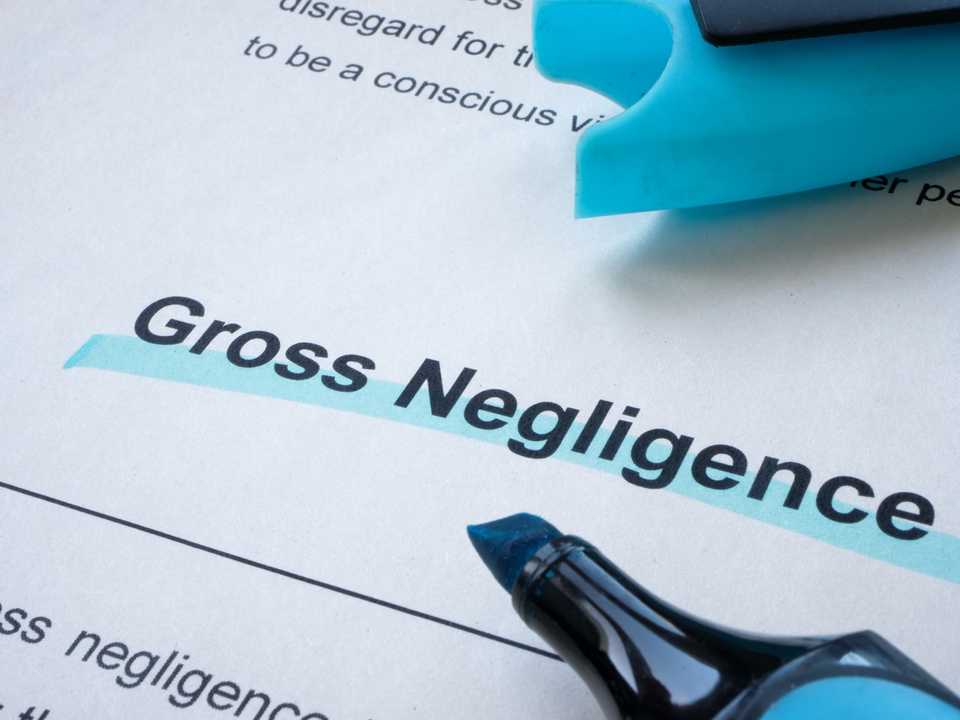
Differentiating gross negligence from ordinary negligence :
- Ordinary negligence occurs when someone fails to act with the level of care that a reasonable person would exercise in similar circumstances. It represents a failure to meet a standard of care that prevents foreseeable harm. For instance, if a landlord neglects to fix a broken stair railing, leading to a tenant’s injury, this could be deemed ordinary negligence.
- In contrast, gross negligence involves a far more severe failure to exercise care. It is not just a mistake or oversight but a serious lapse in judgment that reflects a profound disregard for safety. For example, if a factory manager deliberately ignores safety protocols to save money, resulting in an explosion, this would be considered gross negligence.
Proving Gross Negligence
To establish gross negligence, it is essential to first demonstrate the four elements of ordinary negligence. Beyond these, it must be shown that the defendant's actions represented a substantial and egregious departure from the standard of care. This involves proving the following:
- High degree of negligence: The conduct must reflect a significant deviation from what a reasonable person would do, indicating either wilful misconduct, wanton disregard, extreme recklessness, or a similar severe form of negligence.
This means the actions must go beyond mere carelessness or ordinary mistakes, demonstrating a marked and serious departure from acceptable behaviour.
- Foreseeability of harm: It must be demonstrated that the harm caused was a foreseeable result of the defendant’s severe negligence. This involves proving that the defendant should have anticipated the serious potential consequences of their actions due to their extreme conduct.
- Evidence of extreme behaviour: Proof of gross negligence requires compelling evidence of the severity of the defendant’s behaviour. This may include detailed documentation, photographs, and eyewitness accounts that illustrate the seriousness of the negligence.
Additionally, expert testimony may be necessary to establish the standard of care and highlight how the defendant’s actions deviated significantly from that standard.
Compensation for negligence and gross negligence :
Victims of both negligence and gross negligence may be entitled to various forms of compensation. These compensatory measures are designed to address the different impacts of the negligent conduct and to provide relief to the injured parties. The types of compensation available can include:
Economic damages:
These cover tangible financial losses resulting from the negligent act. They can include:
- Medical expenses: Compensation for hospital bills, ongoing medical treatment, rehabilitation costs, and any other healthcare-related expenses incurred due to the injury.
- Lost wages: Reimbursement for income lost due to the inability to work while recovering from the injury. This can also include future lost earnings if the injury affects the victim’s ability to earn income in the future.
- Property damage: Compensation for the repair or replacement of personal property that was damaged as a result of the negligent act.
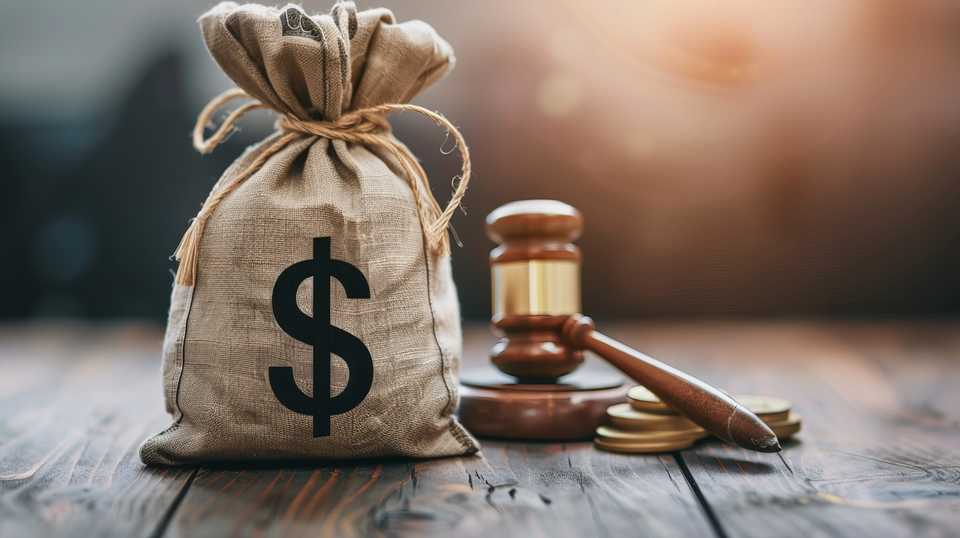
Non-economic damages:
These address the more subjective, non-financial impacts of the injury. They can include:
- Pain and suffering: Compensation for the physical pain and discomfort endured as a result of the injury.
- Emotional distress: Damages for the mental anguish, anxiety, depression, and emotional trauma experienced due to the incident.
- Reduced quality of life: Compensation for the loss of enjoyment of life, including limitations on the victim’s ability to participate in activities they once enjoyed.
Punitive damages:
These are particularly relevant in cases of gross negligence. Punitive damages are awarded not just to compensate the victim but to punish the defendant for particularly egregious behaviour and to deter similar conduct in the future. They are awarded in addition to compensatory damages and reflect the severity and reprehensibility of the defendant’s actions.
The specific amount and type of compensation awarded can vary based on the circumstances of the case, the extent of the injuries, and the jurisdiction’s legal standards. In cases of gross negligence, the potential for higher punitive damages exists, reflecting the more serious nature of the misconduct and the greater degree of harm caused.
JuriGo assists you in finding a liability lawyer!
If you have suffered bodily, moral, or financial injury due to someone else's negligence and are seeking compensation, it is strongly recommended to consult a lawyer specializing in liability and personal injury.
Calling on a lawyer experienced in this field will enable you to better understand your legal rights and take the appropriate steps to obtain fair compensation. These lawyers are competent to guide you in building a solid case, negotiating with the parties responsible and, if necessary, taking legal action to obtain compensation.
Don't underestimate the importance of using a competent lawyer to protect your interests and maximize your chances of obtaining adequate compensation for the damage you have suffered!
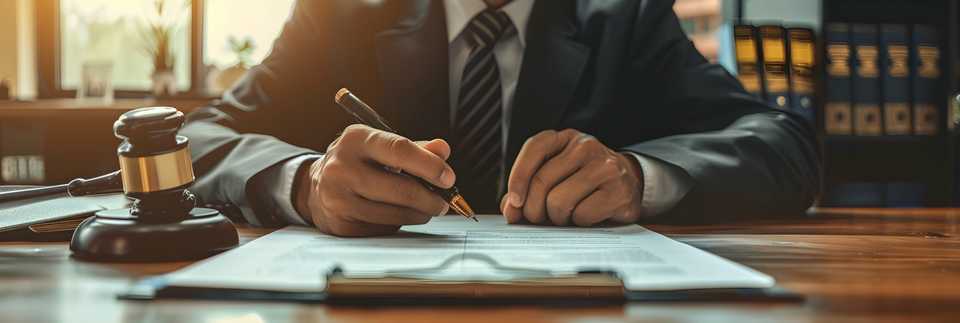
Are you looking for a lawyer specializing in liability and personal injury in Ontario? You've come to the right place!
JuriGo is here to help you! Simply fill out the form at the bottom of the page, and we'll connect you with a lawyer near you. It's completely free and comes with no obligation, so don't delay!